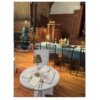Barons of Broadway #31
The intricate details of the colorful Queen Anne Victorian at 309 North Broadway in Upper Nyack continue to amaze villagers today, just as they did when it was built in 1887. Owner James A. Bennet—a man as distinctive as his house—and architect Horace Greeley Knapp created a masterpiece of Gilded Age design in Nyack. Bennet, a lawyer, businessman, politician, and U.S. Consul in Bogota, Colombia, built the 7,000-square-foot house, which immediately garnered “universally favorable comment,” as reported in the lead article of the Christmas Eve edition of the Rockland County Journal.
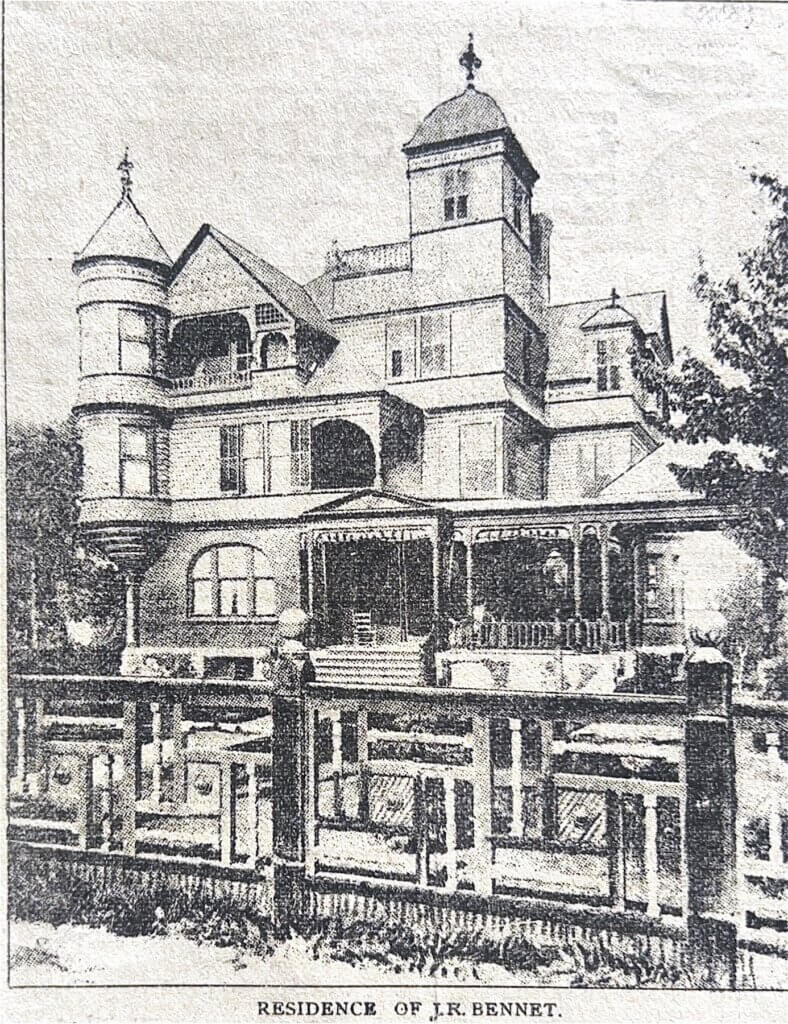
Situated on the former Sarvent farm, the house later became home to Alvin Johnson, the founder of the New College School for Social Change, and the renowned Deyrup family. Their story will be explored in the next episode of Barons of Broadway.
James Armstrong Bennet (1816–1900)
Bennet was an independent thinker who followed his own counsel. His obituary describes him as a kindly, upright man—quiet and unobtrusive—but also notes that he had “some peculiar traits of manners which sometimes brought upon him unfavorable criticism.” What these traits were remains a mystery. Even the inscription on his tombstone reflects his uniqueness.
Born on April 30, 1816, in Oyster Bay, Long Island, Bennet led a remarkable life. He spent 30 years in South America advancing U.S. trade interests before retiring to Upper Nyack.
In 1838, he married Adeline C. Rogers in New York City. Adeline passed away on August 18, 1890, shortly after Bennet completed his new house. Just eight months later, on April 15, 1891, he remarried. His second wife, Sarah Myers from Boston, was 49, while Bennet was 74. Neither marriage produced children. In another temporal oddity, Bennet died on June 19, 1900, and Sarah followed just three months later.
All three are buried in the Bennet family plot at Oak Hill Cemetery, which itself is noteworthy. The family tomb bears the inscription “School is closed.” Adeline and Sarah’s tombstones reads “Went Home,” while James’ simply says “Graduated.”
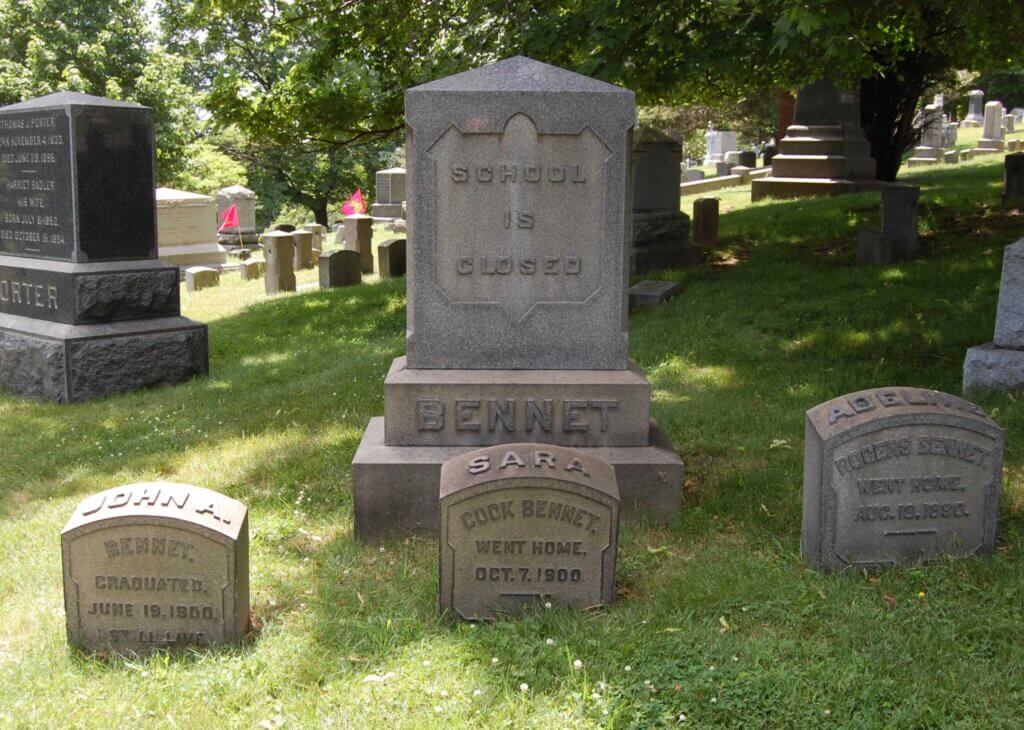
Bennet’s Diplomatic Career
Little is known about the details of Bennet’s career. The 1860 New York City census lists him as an “Agent.” The first reference to his presence in Nyack appears in 1866, suggesting that his 30-year tenure in Colombia overlapped with his early years in the village. Bennet had business interests in Mexico and South America. President Millard Fillmore appointed him U.S. Consul, a role focused on trade and commerce rather than diplomacy. This position proved lucrative for him.
During Bennet’s tenure, Colombia controlled present-day Panama under a treaty with the United States. In exchange for recognizing Colombian sovereignty, the U.S. secured ownership of a crucial rail line across the isthmus built in 1855. The French began digging the Panama Canal in 1879 but abandoned the project ten years later.

Colombia’s economy evolved during this period, with coffee, quinine, and minerals emerging as key exports. Coffee accounted for 50% of exports. One of the earliest American companies involved was the Arbuckle Brothers Company of Brooklyn, which began sourcing coffee from Colombia in 1865. Their business eventually expanded to occupy twelve buildings in DUMBO, Brooklyn. Bennet maintained business interests in Buenos Aries until he retired.
Bennet in Nyack
The first documented mention of Bennet in Nyack appears in 1866 when he placed an ad to sell a “like new” Rockaway Buggy. Over the years, he bought and sold multiple properties. In 1871, he sold a house on Hillside Avenue and built a “handsome village cottage” just north of the Prospect House, designed by Horace Greeley Knapp.
Bennet was a cultured man who frequently wrote to the editor, praising local cultural events. In one letter, he commended a performance of Haydn’s Oratorio by the Nyack Choral Society and Nyack Philharmonic under composer and teacher Grenville Wilson at the Opera House.
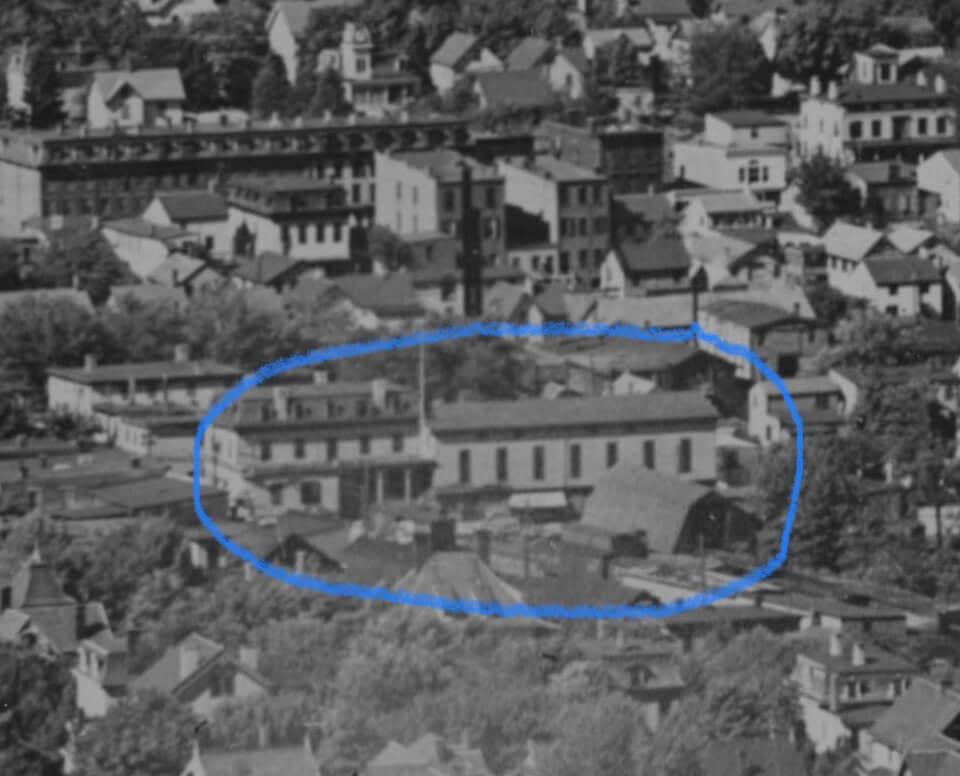
His leadership earned the trust of Upper Nyack residents, who elected him as the village’s third mayor (then called the President). However, his tenure was marred by a dispute over the widening of North Broadway and a conflict regarding the Old Stone Meeting House.
The Old Stone Meeting House Controversy
As mayor, Bennet ordered the removal of two hickory trees on the Old Stone Meeting House property during North Broadway’s widening in 1892. At the same time, a nearby house belonging to Peter Williamson’s wife was relocated eastward to make way for the road. Williamson is recognized as the last known enslaved person in Rockland County.
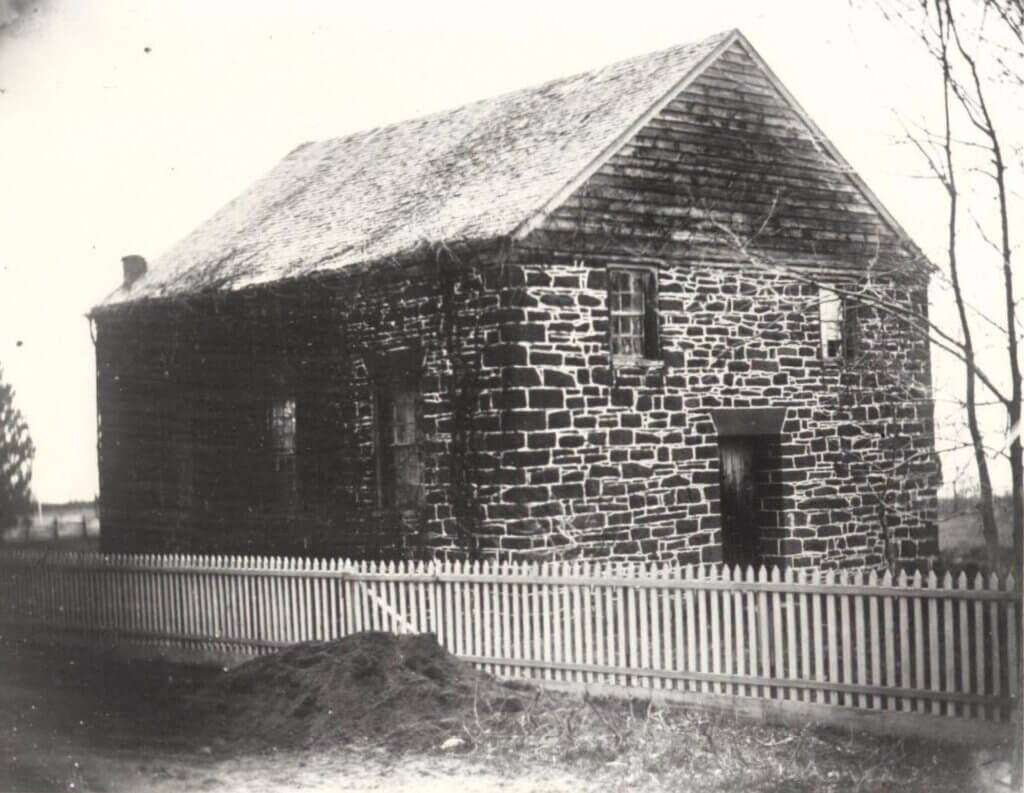
Neighbor Robert Hart, claiming to be a church trustee, attempted to stop the tree removal, arguing he had the authority to intervene. After seeking legal counsel, Bennet proceeded with the removals.
Hart sued, leading to an injunction and a civil lawsuit. Attorney W.T.B. Storms argued that the church’s original deed from 1814 stipulated that trustees must be elected by the congregation, but no such elections had occurred for decades. This complicated ownership claims in 1892. Regardless of ownership, Storms contended that Bennet had no right to remove the trees. The case was set to be argued in Poughkeepsie, but with the trees already gone, legal recourse was limited. The lawsuit’s final outcome is unknown, but Bennet soon left the Upper Nyack Village Board.
Horace Greeley Knapp (1849–1924), Architect
Before exploring Bennet’s villa, it’s worth noting the career of its architect, Horace Greeley Knapp. Named after the famed newspaper publisher, Knapp was the son of an Upper Nyack shoemaker. Though lacking formal training, he excelled in multiple architectural styles and worked from an office at 147 Broadway in New York City.



Three different Knapp styles in Nyack. Upper Left is a second empire style at 148 South Broadway, lower left is a turkish-style building at 147 Piermont Ave., and at right, a stick-style residence at 59 Jefferson Street
Knapp’s diverse portfolio includes the Stephen Merritt House at 148 S. Broadway and the four-story mansard-roofed Commercial Building at Burd Street and Broadway. His Stick-style houses at 38 Glen Byron and 59 Jefferson Street, and his Turkish-style office at 147 Piermont Avenue, further showcase his range. The pinnacle of his Queen Anne designs includes residences at 18 Castle Heights, 104 and 207 South Broadway, 262 Piermont Avenue, and, of course, 309 North Broadway.
The Beautiful Bennet Villa at 309 North Broadway
“Perhaps no dwelling erected in our county has excited such general interest and elicited such universally favorable comment as the new residence of J.A. Bennet, Esq.” —Rockland County Journal, December 24, 1887.
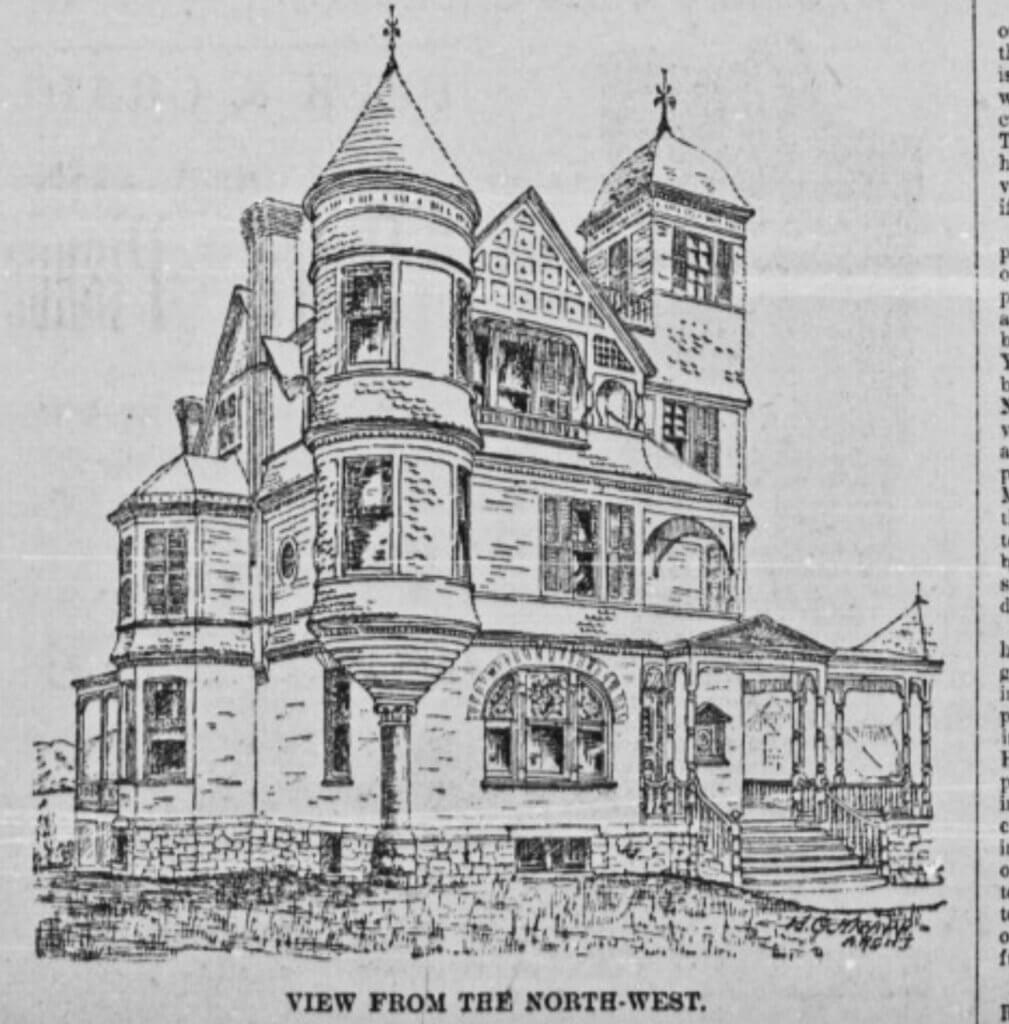
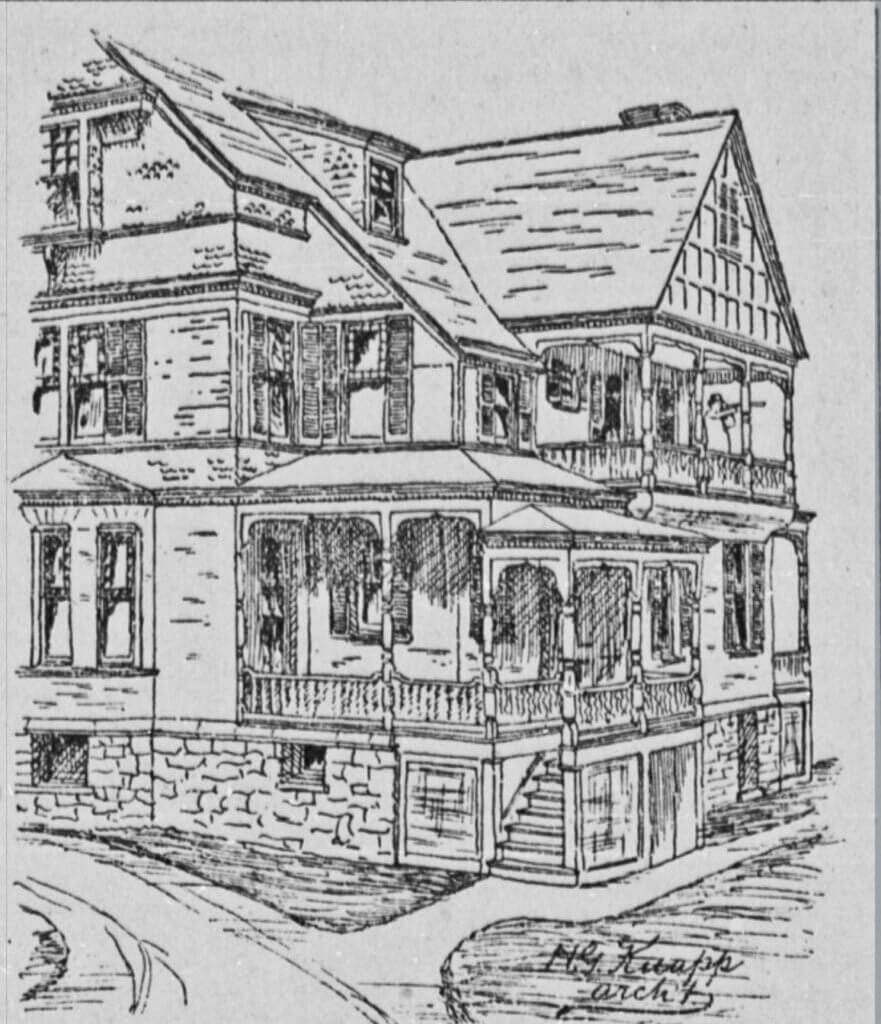
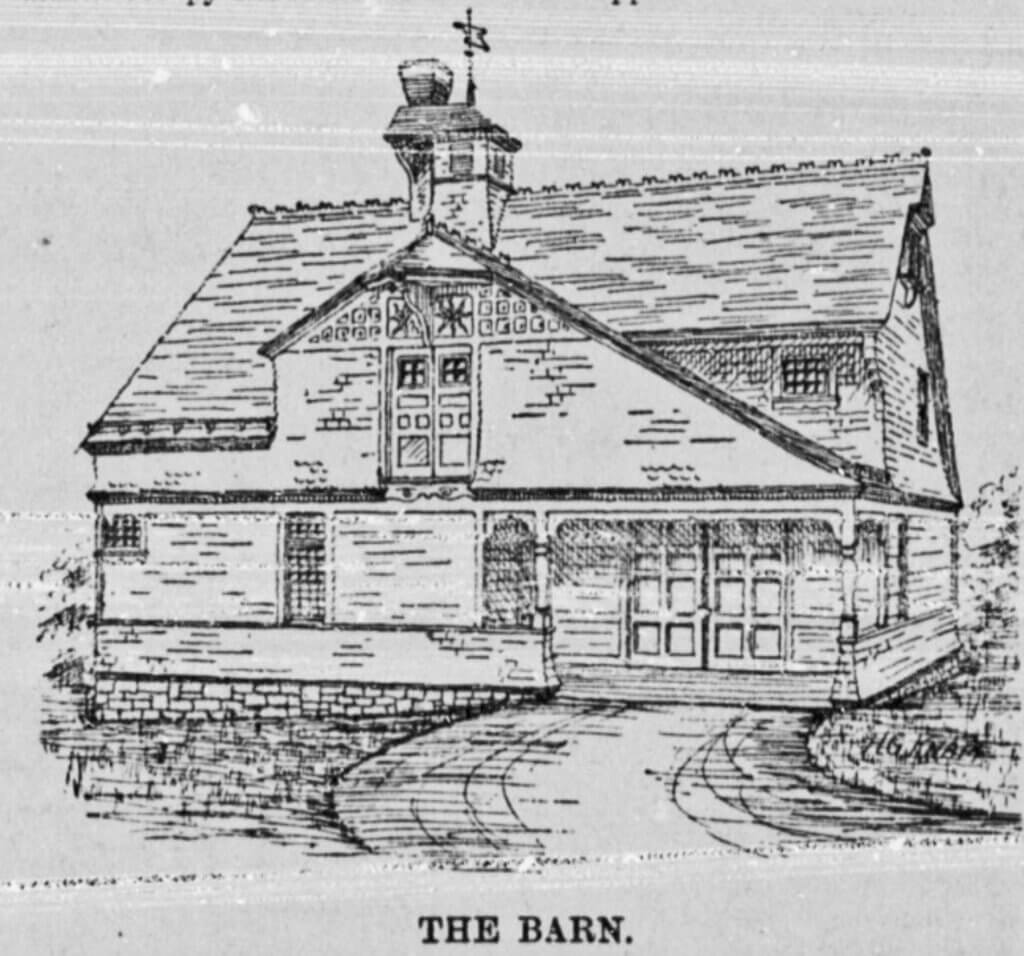
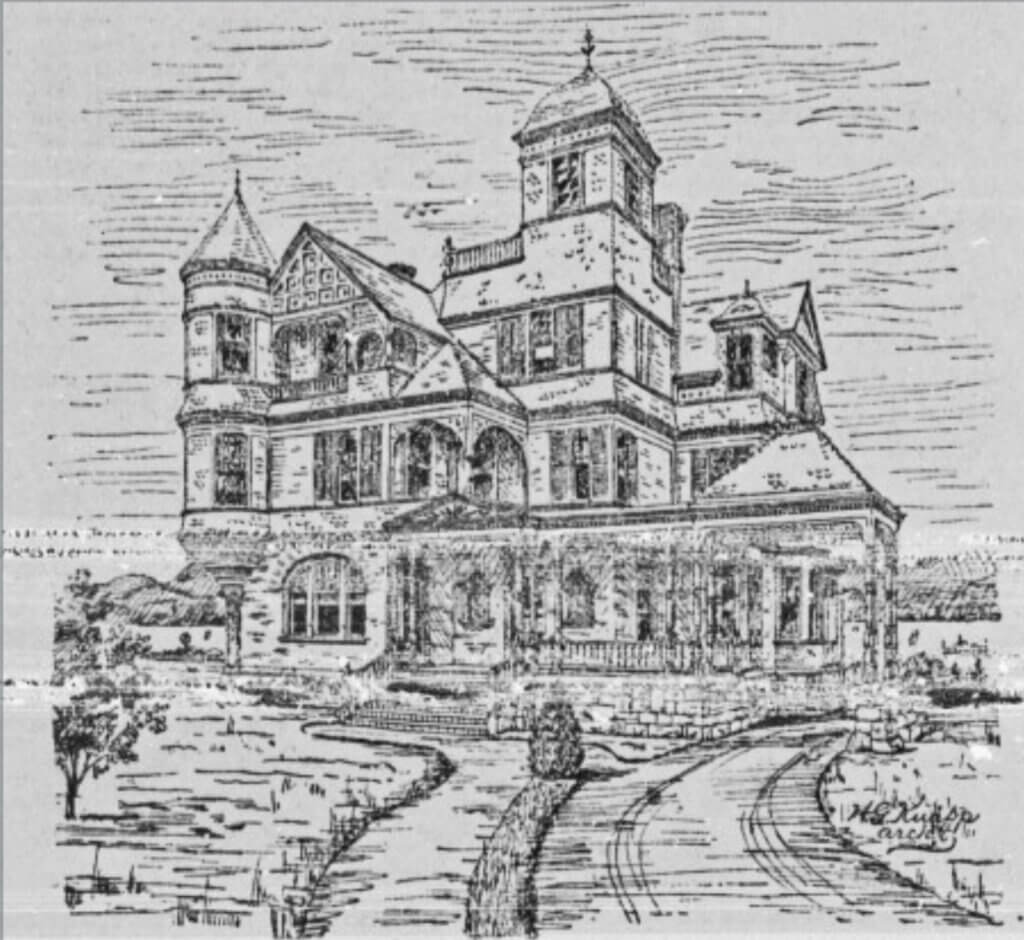
Four line drawings from the December 24, 1887 Rockland Country Journal. Bennet’s villa received more coverage than any other newly constructed house in Nyack during the Gilded Age.
Initially, Bennet planned to build north of the Prospect House, where Knapp had previously designed a cottage for him. Instead, he chose a site with sweeping Hudson River views, purchasing 309 North Broadway from Garret Sarvent and commissioning Knapp once more.
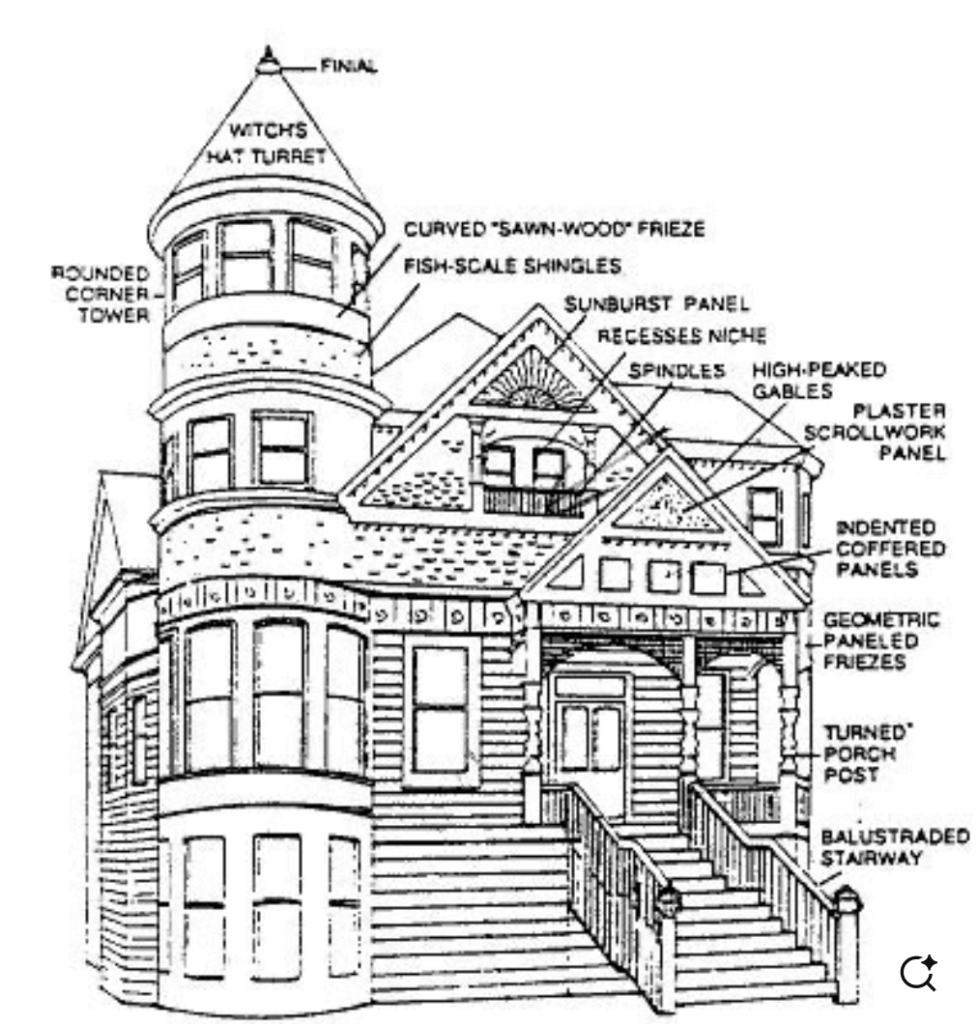
The result is a quintessential Queen Anne Victorian, featuring a four-story tower with a belvedere, a three-story bay tower, and a variety of window designs. Materials range from local stone at the foundation to brick on the first floor and clapboard with fish-scale shingles above. Slate shingles cover the roof. Wraparound porches, verandas, balconies, a porte-cochère, and loggias contribute to its opulent charm.
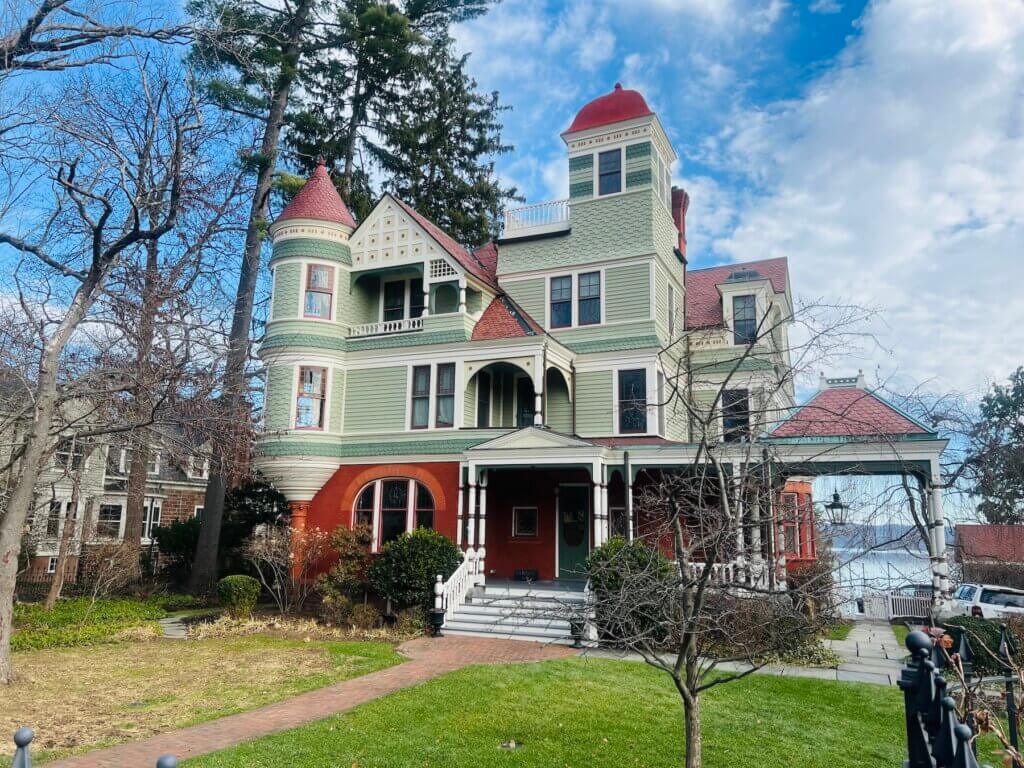
Inside, guests entered through a grand reception hall featuring stained-glass windows, an ornate fireplace, and a carved wooden settle. The staircase, lined with antique bronze and gold-finished Lincrusta, ascended to the attic. A security system warned neighbors of intrusions, and opening the front door automatically lit the gas lamps.
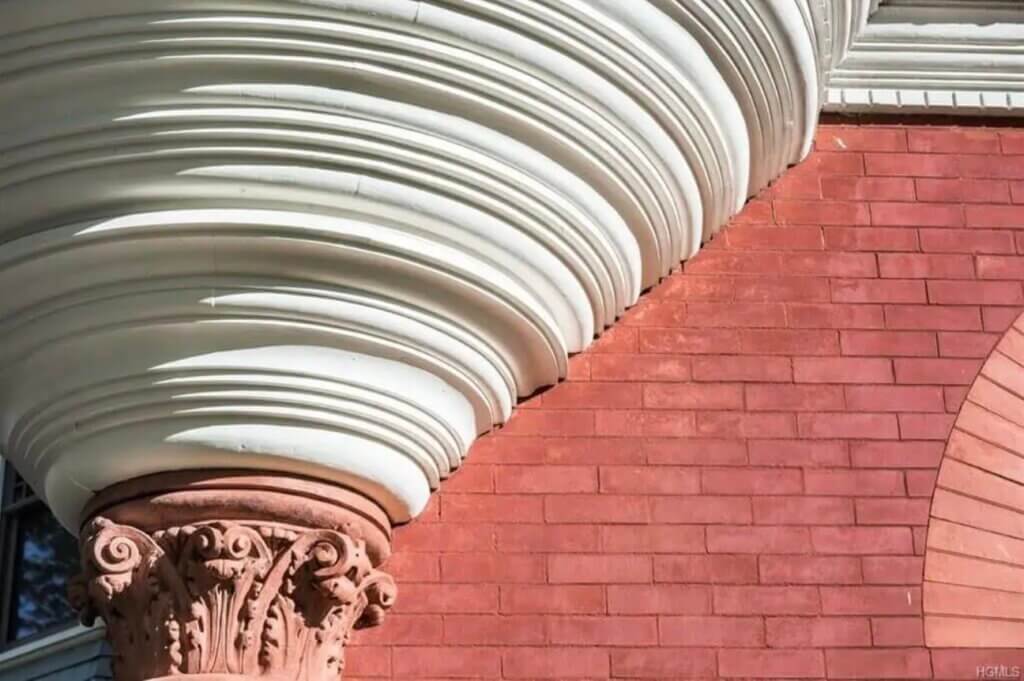
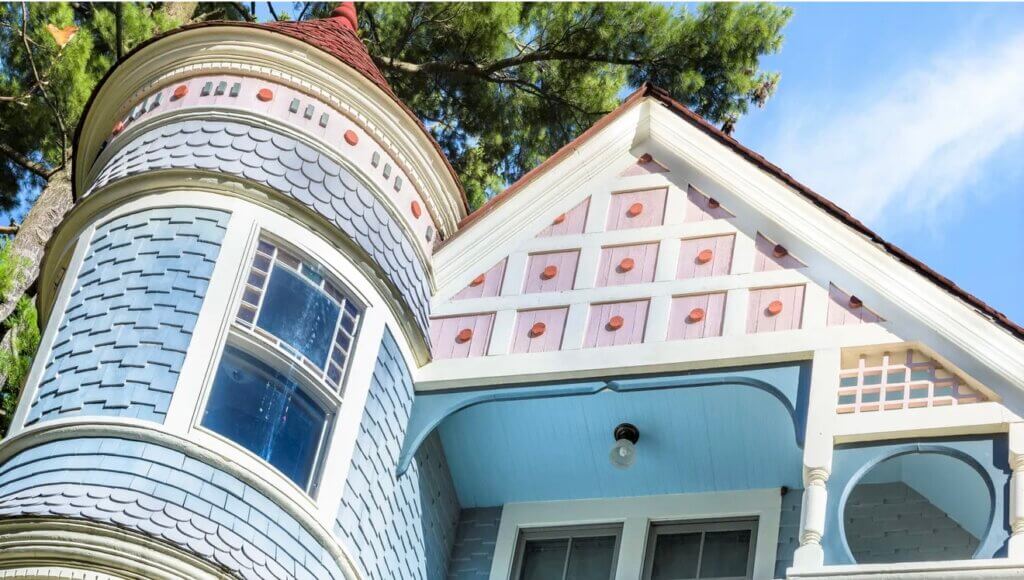

Knapp provided a wealth of disparate details in his design of 309 North Broadwy.
Bennet’s Legacy
James Bennet may be little remembered today, but his extravagant villa remains a striking testament to his life. Just as it did in the Gilded Age, 309 North Broadway continues to captivate visitors.
Stay tuned for Part 2, where we explore the unusual and memorable residents who followed Bennet.
Mike Hays lived in the Nyacks for 38-years. He worked for McGraw-Hill Education in New York City for many years. Hays serves as President of the Historical Society of the Nyacks, Vice-President of the Edward Hopper House Museum & Study Center, and Upper Nyack Historian. . Married to Bernie Richey, he enjoys cycling and winters in Florida. You can follow him on Instagram as UpperNyackMike.
Editor’s note: This article is sponsored by Sun River Health and Ellis Sotheby’s International Realty. Sun River Health is a network of 43 Federally Qualified Health Centers (FQHCs) providing primary, dental, pediatric, OB-GYN, and behavioral health care to over 245,000 patients annually. Ellis Sotheby’s International Realty is the lower Hudson Valley’s Leader in Luxury. Located in the charming Hudson River village of Nyack, approximately 22 miles from New York City. Our agents are passionate about listing and selling extraordinary properties in the Lower Hudson Valley, including Rockland and Orange Counties, New York.







